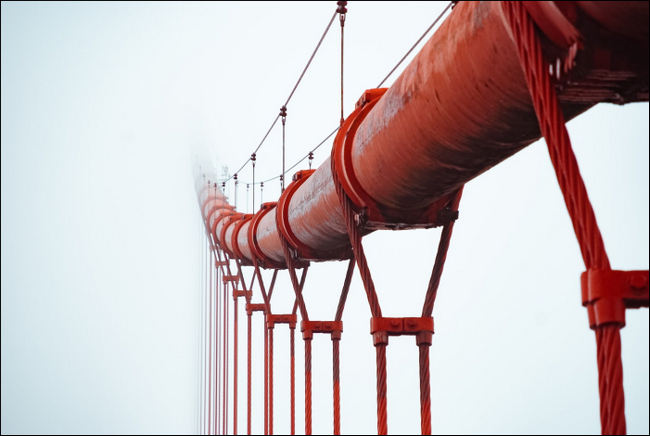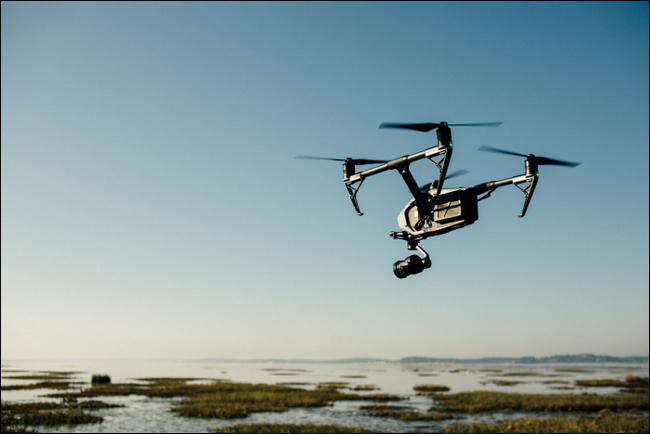~ The buzz around drones in the oil industry ~
A bee can travel over five miles and then remember its way home, despite possessing a brain the size of a pinhead. Scientists have been putting them in virtual reality simulators to help improve unmanned aerial vehicle (UAV) or drone technology. While the honey bee currently has the edge, drone technology is catching up. Here, Chris Johnson, managing director at miniature bearings specialist SMB Bearings, explains the challenges and opportunities when using drones to monitor and inspect oil and gas pipelines.
Drones are being employed in a wider range of sectors and for myriad purposes. The further growth and adoption of this technology will be encouraged by consumer market growth, spill overs from the military sector and the possibilities opened up by 5G. The potential for drones to revolutionise the world of maintenance is clear. They certainly pass the ‘D test’: tasks that are dirty, dangerous and dull could all be left to drones.
BP, Shell and Exxon have already begun using drones for asset inspection and other tasks. Following an incident in 2008, where Exxon’s use of sonar technology was implicated in the deaths of 100 whales near Madagascar, the company recently used drones to help monitor the locations of whales off the coast of Santa Barbara.[i] But what about the benefits for pipelines?

Opportunity in the pipelines
From Alaska to the Niger Delta, oil pipelines are often located in inhospitable or even dangerous environments. In addition to their vast size, this fact makes maintenance through visual inspection a dangerous task. By handing the task of visual inspection over to drones, human workers are no longer in harm’s way.
Making the task of maintenance safer is not the only incentive. Early investors in the technology are seeing significant cost savings. Although it is difficult to quantify the precise saving, research by Roland Berger, has estimated that drone-based inspection of oil and gas rigs leads to cost savings of around 90 percent. The same research estimated that the use of drones has cut maintenance times from eight weeks to five days. The bottom line is that drones will provide a more cost-effective alternative to traditional asset inspection methods such as helicopters and ground vehicles.
However, drones are not simply replacing existing methods. Their agility allows them to offer visualisation and data analysis that existing methods cannot compete with. For example, satellites are limited by their orbit and weather can disrupt the accuracy of the images they provide. An engineer would have to assemble scaffolding to physically access a potential problem.
Scientists now claim that sophisticated sensors are developed enough and small enough to be mounted on UAV systems. As well as capturing high resolution visual data, drones can be equipped with other sensors to monitor pipelines, such as thermal imaging or ultrasound inspection.
Challenges for take off
Companies wanting to adopt this technology must also make sure they understand the evolving regulatory environment. Those that already use aviation, for example with helicopters, are probably in a better position to confront this hurdle due to their existing knowledge of aviation regulation.
Beyond visual line of sight (BVLOS) is among the most discussed things in the drone industry. This refers to where a drone is operating beyond the pilot’s line of sight. BVLOS activity will be necessary to enjoy the full benefits this technology could offer for asset inspection of pipelines, but in some countries it is not permitted.

In the United States, for smaller drones flying below 400 above ground level (AGL), BVLOS is currently not permitted without the necessary authorisation from the Federal Aviation Administration (FAA). To navigate around this restriction an FAA waiver is required. According to Geospatial World, 99 percent of waiver applications fail.
The restrictions are different when you enter different airspace classifications (those above 400 AGL). For pipelines that traverse national boundaries, these regulatory issues become even more complex.
Another consideration many businesses must make is what business model to adopt. In its guidance for the industry, the American Petroleum Industry outlines three alternative models.
Although the technology is constantly improving, there are limitations that are relevant to their potential for surveying pipelines. The limitations of the batteries that power the vehicles gives rise to range anxiety, a problem that is more significant for pipelines that cover significant distances. It is likely the industry will focus on using drones for inspection of oil rigs and other infrastructure before taking on the challenge of vast pipelines.
Something to bear in mind
If maintenance engineers are to exploit the benefits of UAV technology, keeping the drones in tip-top condition will be essential. Understanding the maintenance needs of these vehicles will be important for those companies who adopt the internal model referred to above. Engineers will need to be quick to acquire fresh expertise in this area.
Maintaining and replacing the bearings in drones will be an essential part of this. Many oil installations face significant risks from corrosion. Bearings too, need protection from corrosion. If your drone is operating in an environment where this risk exists, speak to a reputable supplier like SMB Bearings for the best information on bearing choice for your application.
The buzz surrounding drones is only set to grow and their use in monitoring and maintaining oil installations will allow the oil industry to improve worker safety, reduce the time taken to complete key maintenance tasks and realise substantial cost savings. If you are thinking of adopting an unmanned aerial vehicle program to monitor your assets, consider the benefits of partnering with a reliable supplier of high-quality precision bearings to help keep your drones in the air.
SMB Bearings is a specialist supplier of miniature bearings. To find out more visit smbbearings.com
[i] Stephanie Roker (2016), ‘Exxon Mobil using drones to track whales,’ 13 July, available at: https://www.worldpipelines.com/equipment-and-safety/13072016/exxon-mobil-using-drones-to-track-whales/
About SMB Bearings: SMB Bearings originally specialised in miniature bearings, thin-section bearings and stainless steel bearings. By natural progression, the company expanded the range to include other corrosion resistant bearings such as plastic bearings, 316 stainless bearings and ceramic bearings.
Remaining a specialist business, SMB Bearings provide a high level of product knowledge, providing bearing and lubrication solutions to existing or potential customers, whether individuals or large corporations. SMB Bearings does not just sell bearings, but helps to solve your problems.
For further information please visit http://www.smbbearings.com/
